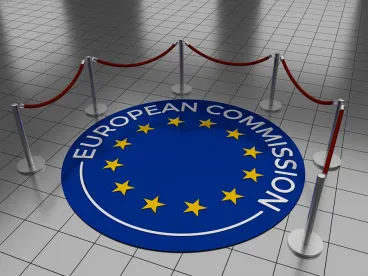The European Union has adopted a new obligation on suppliers of articles that contain substances listed in the REACH Candidate List of SVHCs in concentrations above 0,1% to submit a notification to the European Chemicals Agency (“ECHA”). The new requirement is intended to facilitate the recycling of products and was introduced by a new Directive amending the EU Waste Framework Directive.
The new notification requirement will apply as from January 5, 2021 to all producers, importers, distributors and retailers of a wide variety of articles, such as toys, paper products, electronic devices, vehicles, packaging, medical devices, and apparel. The requirement is not subject to any volume threshold, and is also likely to apply where the component (article) of a complex article (e.g., computer) contains a Candidate List substance in concentrations above 0,1%.
The new requirement is in addition to the notification, supply of information and prior authorization requirements that the EU REACH Regulation already imposes on Candidate List substances.
The REACH Candidate List of Substances of Very High Concern for Authorization
The EU REACH Regulation requires ECHA and the European Commission to list “substances of very high concern” (“SVHCs”) in the Candidate List of SVHCs for Authorization. SVHCs may include substances identified as: (i) meeting the criteria for classification as Cat. 1A and 1B carcinogens, mutagens, or toxic to reproduction substances; (ii) persistent, bioaccumulative and toxic (“PBTs”); (iii) very persistent and very bioaccumulative (“vPvBs”); and (iv) substances, such as endocrine disrupters, for which there is scientific evidence of probable serious effects to human health or the environment that give rise to a level of concern equivalent to that of Cat. 1A and 1B CMRs, PBTs, and vPvBs and that are identified on a case-by-case basis. Listed SVHCs are candidate substances to be included in Annex XIV to the REACH Regulation as substances subject to a prior authorization.
The Candidate List is updated twice a year and already contains 191 substances.
The New Notification Requirement and ECHA Database
The newly adopted Directive amending the Waste Framework Directive requires Member States to adopt legislation to ensure that suppliers of articles in the EU/EEA notify ECHA if their articles contain Candidate List substances in concentrations above 0,1%. It also requires ECHA to create a database with the information received.
First, all suppliers of articles in the EU/EEA will have to provide ECHA with information to allow the “safe use” of the article if it contains a Candidate List substance in concentrations above 0,1%. In particular, the amending Directive requires Member States to “ensure that any supplier of an article [as defined in the REACH Regulation] provides the information pursuant to Article 33(1) [of the REACH Regulation] to the European Chemicals Agency as from 5 January 2021.” In turn, Article 33(1) of the REACH Regulation states that “any supplier of an article containing a substance [included in the Candidate List] in a concentration above 0,1% weight by weight (w/w) shall provide the recipient of the article with sufficient information, available to the supplier, to allow the safe use of the article including, as a minimum, the name of the substance” (emphasis added).
The REACH Regulation defines an article as “an object which during production is given a special shape, surface or design which determines its function to a greater degree than does its chemical composition.” In effect, this definition includes any object. The Court of Justice of the European Union has held that, in the case of complex articles (i.e., articles composed of different articles/components), the REACH obligations apply to each of the articles contained in the complex article. For example, where a computer contains a component with a Candidate List substance, the concentration must be calculated on the basis of the weight of the component and not of the computer. The new notification requirement should not apply to the import or supply of waste as the REACH Regulation states that waste is not an article.
Second, the amending Directive requires ECHA to establish by January 2020 a database with the information received from notifying suppliers. This database must be available to waste treatment operators, and to consumers upon their request. Member States and EU authorities are also likely to use the database to gather information to support their proposed restrictions and other measures on articles containing SVHCs. For example, information contained in the database could be used as evidence to regulate under specific product legislation, such as the EU RoHS Directive.
The Need for National Implementing Legislation and ECHA Guidance
The amending Directive’s new requirement to notify ECHA, must be implemented into the national laws of the different Member States of the EU/EEA in order to be enforceable on suppliers. The Directive requires Member States to adopt the necessary implementing legislation by July 5, 2020. In any event, the national implementation should be in force by January 5, 2021 when the notification requirement should start to apply.
There is the risk that the actual details of the notification may vary per Member State, and that the obligation to notify will not apply as from January 2021 to suppliers established in those Member States that are delayed in the adoption of their national implementing legislation. Thus, during the next months, ECHA and the European Commission are likely to work with Member States on the adoption of guidance with the aim of ensuring a harmonization of the notification details.
Among other details, European authorities are likely to consider the following:
- Who should notify? The notification obligation applies to “any supplier of an article,” which may include any producer, importer, distributor and retailer, including online sellers, of articles containing Candidate List substances above the concentration threshold. This is because the REACH Regulation defines a supplier of an article as “any producer or importer of an article, distributor or other actor in the supply chain placing an article on the market.” The Regulation also defines “placing on the market” as any “supplying or making available” to a third party, including import.However, it is unclear whether suppliers down the supply chain (e.g., retailers) will be required to submit a notification when the same article has already been notified by a supplier up the supply chain (e.g., importer). Moreover, given that the notification obligation will be established in the national laws of the different Member States, it is also unclear whether actors down the supply chain will be exempted from notification if upstream suppliers in other Member States have already notified.
- What should be notified and how? The amending Directive requires suppliers to provide ECHA with information available to allow the safe use of the article, but does not specify what details should be notified or the format and mechanism of such notification. The notification could include the identity of the supplier, the SVCH, the article, and “safe use” information, but Member States could impose different information requirements unless there is some harmonization. In any event, suppliers should only be required to supply information that they have “available.”
In order to allow ECHA to run its database, Member States should also agree on the use of a common notification format and procedure.
- What is information to allow the “safe use of the article”? In particular, the Commission, ECHA and Member States will have to agree on what constitutes information “to allow safe use of the article.” At a minimum, this information should include the name of the SVHC, but Member State could also require other information, such as the concentration threshold and routes of environmental and human health exposure.
- How will confidentiality be protected? Past practice with other EU databases suggests that many consumer requests for access are in reality from competitors. Depending on the level of information that will have to be notified, authorities could agree to grant confidentiality to some information, or to only grant access to detailed information to registered waste treatment operators.
Existing REACH Obligations on Candidate List Substances
The new obligation on suppliers of articles to notify ECHA if their articles contain Candidate List substances in concentrations above 0,1% is in addition to the following already existing REACH obligations on Candidate List substances:
- Obligation on producers and importers of articles containing Candidate List substances in concentrations above 0,1% to notify ECHA if the all of the following thresholds are met: (i) the substance is present in the articles in quantities of one ton per producer or importer per year; (ii) the substance has not been registered for the use in the article by any other party; and (iii) the producer or importer cannot exclude exposure to humans or the environment during normal or reasonable foreseeable conditions of use of the article, including disposal.
- Obligation on suppliers to provide a safety data sheet to professional customers of Candidate List substances or mixtures containing them.
- Obligation on suppliers to provide professional customers of articles with information allowing for the safe use of the articles if they contain Candidate List substances in concentrations above 0,1%. Suppliers are also required to provide the same information to consumers if they request it.
- Candidate List substances may also be included in Annex XIV to the REACH Regulation as subject to prior authorization. This prior authorization requirement applies to producers, users and importers of the substances and mixtures containing them in concentrations above a specific threshold (g., 0,1%). It applies to producers using Candidate List substances and mixtures containing them to manufacture articles in the EU/EEA, but not to importers of articles manufactured in third countries.




 />i
/>i

